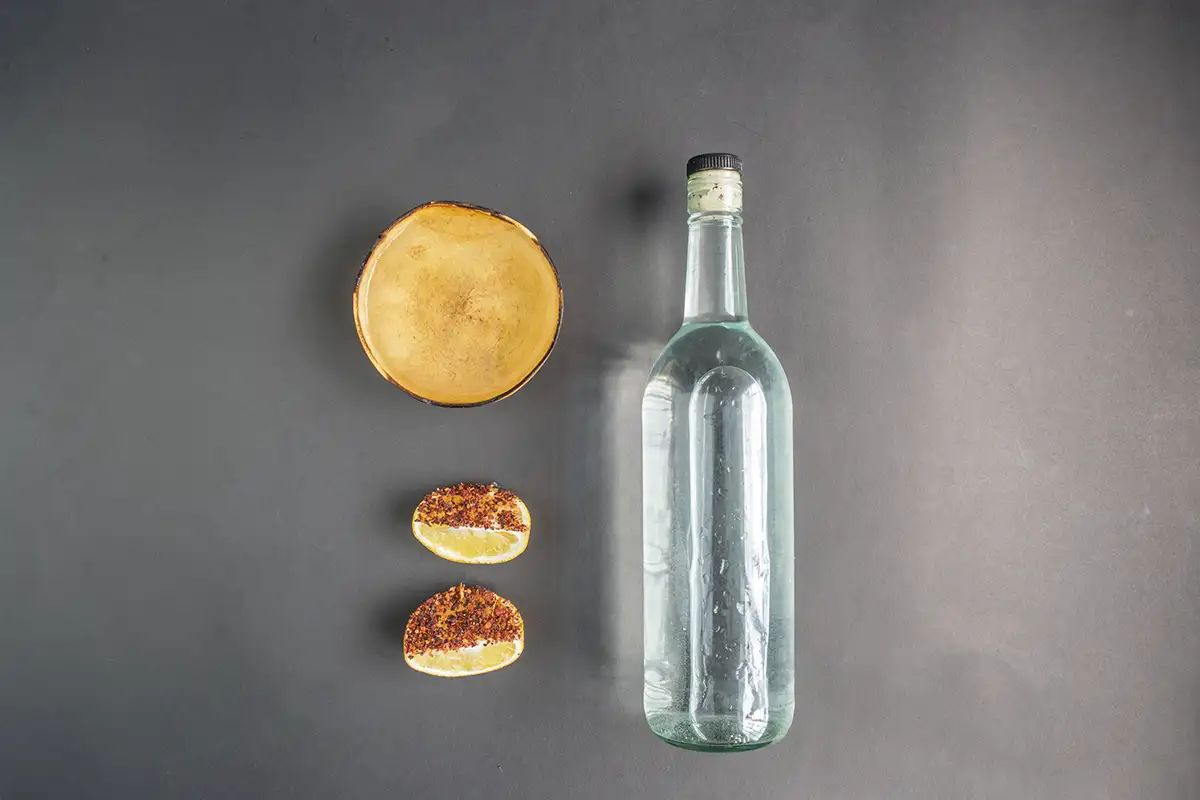What Is the Difference Between Mezcal and Tequila?

May 28, 2024

What We’ll Cover in This Piece:
- The Difference Between Mezcal and Tequila’s Origins and Production
- The Difference Between Mezcal and Tequila Agave Varieties
- The Difference Between the Mezcal and Tequila Flavor Profiles
- The Difference Between Mezcal and Tequila’s Cultural Symbolism
- A Final Word on the Differences Between Mezcal and Tequila
The Difference Between Mezcal and Tequila’s Origins and Production

In the dynamic world of spirits, the journey from agave plant to bottle is a captivating saga steeped in history and tradition. Understanding the origins and production methods of mezcal and tequila is akin to unlocking the secrets of Mexico's cultural heritage—both could be stories you’d like to share with your guests.
Mezcal: A Time-Honored Tradition
Mezcal is a testament to the ingenuity and resilience of Mexico's indigenous peoples, whose reverence for the agave plant dates back thousands of years. Originating primarily from the rugged terrain of Oaxaca, mezcal production is deeply intertwined with the region's cultural identity.
At the heart of mezcal production lies the ancestral method, a labor-intensive process that begins with harvesting mature agave plants, known as maguey, whose hearts, or piñas, serve as the raw material for this sacred elixir.
Once harvested, the piñas are roasted in earthen pits, or palenques, lined with volcanic rocks and filled with wood and charcoal. This underground roasting imparts mezcal with its distinctive smoky flavor, a hallmark of its artisanal craftsmanship.
Following roasting, one crushes the cooked agave using a stone tahona wheel or, in some cases, a horse-drawn tahona, a practice dating back generations. The resulting agave pulp is then fermented in wooden vats, allowing natural yeasts to work their magic and transform sugars into alcohol.
Distillation, the final step in the mezcal-making process, traditionally occurs in small clay or copper pot stills, known as alambiques. This artisanal approach yields a spirit of unparalleled complexity rich in character and history.
Tequila: From Agave Fields to Global Stage
Tequila, the quintessential Mexican spirit, has traversed a remarkable journey. Hailing primarily from the Jalisco region, tequila production embodies a blend of tradition and modernity, reflecting the evolution of Mexico's spirits industry.
The blue agave plant, known scientifically as Agave tequilana Weber, serves as the cornerstone of tequila production and is revered for its high sugar content and distinctive flavor profile. One key difference between mezcal and tequila: Unlike mezcal, which embraces diverse agave varieties, tequila's identity is closely explicitly tied to the blue agave species.
Upon reaching maturity, typically after seven to ten years, the blue agave plants are harvested by skilled jimadores, whose expertise ensures optimal quality and flavor. The piñas are then transported to distilleries, where they undergo a series of processing steps tailored to tequila production.
Another critical difference between mezcal and tequila happens at this stage. In contrast to mezcal's underground roasting, tequila piñas are typically baked or steamed in above-ground ovens, known as hornos, resulting in a cleaner, more refined flavor profile.
After cooking, the agave is shredded and fermented in large stainless steel or wooden tanks, where yeast is added to initiate the fermentation process.
Distillation, the final stage in tequila production, takes place in copper pot stills or more modern continuous stills, depending on the desired style. If desired, the resulting spirit is then aged in oak barrels to impart additional complexity and character.
The Difference Between Mezcal and Tequila Agave Varieties

Diving into the realm of agave varieties illuminates a significant difference between mezcal and tequila.
Mezcal: A Mosaic of Agave Diversity
With mezcal, fans enjoy a veritable feast of agave varieties, each contributing its own distinct nuances to the final spirit. From the ubiquitous Espadín to the elusive Tobalá and Tobaziche, mezcal showcases a kaleidoscope of flavors sourced from various agave species.
Espadín, the workhorse of mezcal production, reigns as the most widely cultivated agave variety. Prized for its adaptability and versatility, Espadín’s flavor profile spans the spectrum, encompassing earthy, floral, and fruity notes that serve as the foundation for many mezcal expressions.
In contrast, wild agave varieties such as Tobalá and Tobaziche offer a glimpse into the untamed beauty of Mexico's agave-rich landscapes. These elusive gems, often found in remote mountainous regions, yield mezcal of unparalleled complexity, with flavors ranging from tropical fruits to herbal botanicals.
Tequila: Embracing the Blue Agave Legacy
While mezcal revels in agave diversity, tequila finds its essence distilled from a single source: the blue agave (Agave tequilana Weber). This iconic agave species, indigenous to the Jalisco region, serves as the backbone of tequila production.
Revered for its high sugar content and distinctive flavor profile, blue agave's sweet, herbaceous character forms the cornerstone of tequila's identity, infusing the spirit with notes of cooked agave, citrus, and subtle floral undertones.
Tequila's resilience in harsh growing conditions and lengthy maturation period contribute to its reputation as a spirit of exceptional quality and depth.
While tequila's focus on a single agave variety may seem limiting compared to mezcal's diverse lineup, the blue agave's rich complexity also offers a world of exploration for discerning palates.
The Difference Between the Mezcal and Tequila Flavor Profiles

The allure of mezcal and tequila lies in their distinctive flavor profiles, each offering a sensory journey rich in complexity and nuance. Understanding the difference between mezcal and tequila’s characteristic flavors and aromas allows for a deeper appreciation of their unique qualities.
Mezcal: A Symphony of Complexity
Mezcal's flavor profile is a testament to the diversity of agave varieties. From smoky and earthy to fruity and floral, mezcal offers a symphony of flavors that tantalize the palate and evoke a sense of place.
The smokiness imparted by the underground roasting process lends mezcal its signature character, evoking memories of crackling fires and rugged landscapes. Beyond the smoke, mezcal reveals layers of complexity, with nuances ranging from tropical fruits and citrus to herbal botanicals and minerality.
Each agave variety contributes its own unique flavors and aromas, adding depth and dimension to mezcal expressions. Whether sipped neat or incorporated into cocktails, mezcal captivates with its rich, multifaceted profile that evolves with each sip.
Tequila: Crisp and Clean with Subtle Nuances
The blue agave defines tequila’s flavor profile, featuring sweet, herbaceous notes balanced by hints of citrus and spice. Unlike mezcal's smoky intensity, tequila offers a cleaner, more refined, approachable, and versatile taste.
The cooked agave shines through in tequila, imparting notes of caramel and vanilla that linger on the palate. These flavors are complemented by subtle undertones of citrus, pepper, and earthiness, adding complexity and depth to the spirit.
While blanco (unaged) tequila showcases the pure essence of the blue agave, aged expressions like reposado and añejo introduce additional layers of flavor from oak aging. These aged tequilas boast notes of oak, caramel, and baking spices, further enhancing the drinking experience.
The Difference Between Mezcal and Tequila’s Cultural Symbolism
Beyond their flavors and production methods, mezcal and tequila hold profound cultural significance, representing Mexico's rich heritage and traditions differently. Exploring the cultural contexts surrounding these spirits enhances the drinking experience, fostering a deeper connection to the land and its people.
Mezcal: A Sacred Tradition
Mezcal occupies a revered place in Mexican culture, where people celebrate the beverage as a symbol of community, spirituality, and tradition.
In indigenous communities across Mexico, mezcal plays a central role in ceremonies and celebrations, symbolizing the interconnectedness of humanity and the natural world. Its production is steeped in rituals and traditions passed down through generations, preserving ancestral knowledge and wisdom.
Beyond its ceremonial significance, mezcal embodies the spirit of artisanal craftsmanship and small-scale production, supporting local economies and fostering sustainable practices. Each bottle of mezcal tells a story of the land, the people, and the traditions that shape its creation, making it a powerful ambassador for Mexican culture.
Tequila: A Global Icon
Tequila, on the other hand, has grown into a global phenomenon. From the bustling streets of Jalisco to the world's finest bars and restaurants, tequila has transcended borders and cultures, becoming synonymous with celebration and conviviality.
The agave fields of Jalisco, known as the birthplace of tequila, serve as a living testament to Mexico's agricultural heritage and ingenuity. Here, generations of jimadores have tended to the blue agave plants with reverence and skill, preserving age-old traditions and techniques.
Tequila's cultural significance extends far beyond its production process, permeating every aspect of Mexican life and society. From the vibrant colors of Dia de los Muertos celebrations to the infectious rhythms of mariachi music, tequila is woven into the fabric of Mexican identity, embodying the spirit of fiesta and camaraderie.
But it has also grown popular all over the world. Although some might argue, mezcal isn’t far behind.
A Final Word on the Differences Between Mezcal and Tequila
As stewards of the bar, your commitment to excellence extends beyond the drinks you serve; it encompasses the art of storytelling and cultural enrichment. Understanding the differences between mezcal and tequila—history, tradition, and flavor—adds depth to your beverage program. So, as you curate your beverage selection and craft compelling narratives, remember the distinctive worlds of mezcal and tequila.
Note: This article was generated with the help of ChatGPT. It was edited, enhanced, and published by humans.
Showcase Your Mezcal And Tequila With Untappd for Business Digital Menus
Untappd for Business is more than beer menus.
Nearly 20,000 bars, restaurants, breweries, and more are using Untappd for Business to build their ultimate menus complete with food, wine, liquor, and more!
Discover how Untappd for Business can create an incredible guest experience by signing up for a free trial or demo today!
